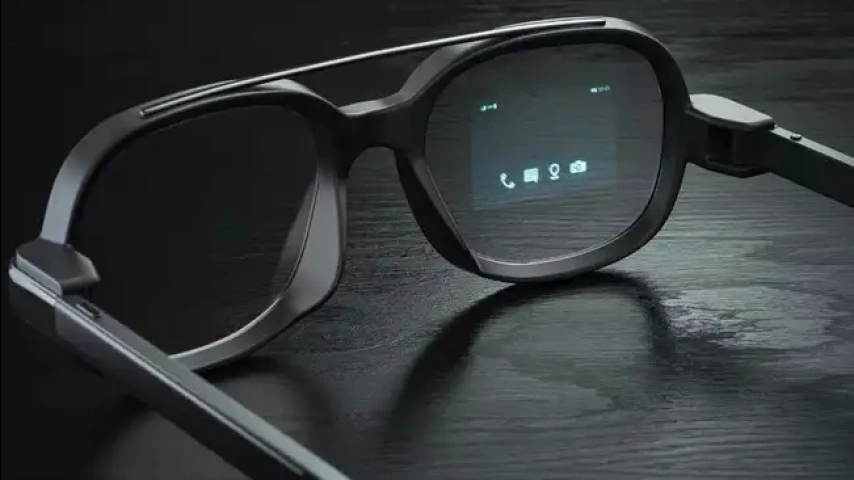AI / Detail
Invisible Computing and the Rise of Smart Glasses: Market Dynamics, Strategies, and Challenges Ahead
Michael Jack | 22 August 2025 | 10:53
The concept of invisible computing—technology so seamlessly integrated into daily life that it becomes almost unnoticeable—is no longer futuristic speculation.
Smart glasses, as one of its most prominent embodiments, are evolving rapidly. Industry forecasts suggest the global market for smart glasses will expand at a compound annual growth rate (CAGR) of nearly 48% through 2030, driven by both enterprise adoption and emerging consumer interest.
As the line between functionality, convenience, and social acceptability blurs, the competition between industrial and consumer-focused strategies is intensifying.
Industrial vs. Consumer Strategies
Industrial Applications:
Smart glasses have already carved a clear niche in industrial settings. Companies like Vuzix, RealWear, and Microsoft (HoloLens) are focusing on:
- Remote assistance and training: Field technicians use glasses for real-time video collaboration and hands-free guidance.
- Workflow optimization: Augmented reality (AR) overlays improve assembly, maintenance, and logistics.
- Compliance and safety: Glasses can record and verify procedures in regulated industries.
Consumer Applications:
The consumer segment is more experimental but potentially more lucrative in scale, especially as everyday life continues to shift toward continuous connectivity.
Major players like Meta (Ray-Ban Meta Smart Glasses), Apple (Vision Pro, with future lighter versions), and Google (Project Iris) are betting on a broad set of capabilities that stretch beyond the early novelty factor:
- Lifestyle integration: Lightweight, stylish glasses that support media playback, photography, notifications, and in the future, integration with health-tracking sensors or contextual reminders.
- Seamless communication: Voice assistants, AR overlays for navigation, real-time translation, and even integration with productivity apps for messaging, calendar, and collaboration.
- Entertainment and gaming: Immersive AR experiences linked with social media platforms, AR-enhanced concerts or sporting events, and early-stage gaming environments that connect with existing ecosystems like Meta’s Horizon or Apple Arcade.
- Shopping and commerce: Experiments with AR overlays that help consumers visualize products in real time, from trying on clothing virtually to viewing furniture placement in their home, are also under exploration.
Consumer smart glasses also face the challenge of battery performance and privacy perception, as mainstream buyers are more sensitive to intrusive or bulky technology.
The result is a competitive field where success may hinge on delivering a product that feels as natural as a fashion accessory while quietly embedding powerful digital features.
Real Consumer Experiences
Here are some firsthand impressions from users who’ve integrated smart glasses into their lives:
A Reddit user shared deep emotional value:
“Registered moments from my newborn… hands-free. One of her first smiles!”
A parent recommended them as ideal for capturing fleeting family moments without a camera in the face.
Another user said after two weeks:
“Always having music available at a tap… makes doing something in the kitchen… much, much more fun.”
A long-term reviewer who uses Ray-Ban Meta every day:
“I’ve owned a pair… basically daily… quite light… never felt discomfort.”
For tough environments and audio clarity, one user noted:
“The mic quality is 10x better than my AirPods Pro! Even… next to waterfalls… sound quality… unexpectedly good.”
Some raised concerns about AI reliability:
“Handsfree calling, texting, photos… amazing… The AI is handy… HOWEVER… anything interesting… is pretty much useless… success rate… 1 in 100-ish.”
From a Washington Post piece, a more nuanced consumer experience:
Wearing smart glass from Even Realities ($599), the author found others responded awkwardly—interpreting the reflective waveguides as distraction or recording.
The subtle design still influenced social norms and trust. The Washington Post
These experiences illustrate both the potential of smart glasses to enhance daily life and the real social and technical frictions to be addressed.
Key Industry Players
- Meta (Ray-Ban Meta Smart Glasses): Positioning as a lifestyle product, focusing on camera, music, and social integration. Recent updates emphasize AI-powered voice assistance and tighter integration with Instagram and WhatsApp, broadening its appeal beyond tech enthusiasts to fashion-conscious consumers.
- Apple (Vision Pro / future iterations): Starting with a high-end mixed reality headset, expected to downscale to everyday wearables in coming years. Apple’s strong ecosystem integration—from iCloud to Apple Health—positions it to unify entertainment, productivity, and wellness features once hardware becomes lighter and more affordable.
- Microsoft (HoloLens): Dominant in industrial and enterprise AR, though facing competition from smaller agile firms. The company continues to secure defense and enterprise contracts, with a focus on long-term industrial adoption, training, and collaboration tools powered by Azure cloud services.
- Google: Reviving smart glasses efforts with enterprise pilots and potential consumer relaunch. Google’s strength in AI-driven services like Google Translate and Google Maps could provide an edge in real-time communication and contextual assistance, making its next consumer push highly anticipated.
- Vuzix & RealWear: Strong in industrial AR, known for durability and hands-free interfaces. These firms maintain a reputation for rugged reliability in harsh environments, while also experimenting with lighter models and integrations with enterprise platforms such as SAP and Salesforce.
- Snap & Xiaomi (Emerging Players): Snap continues to experiment with Spectacles, targeting AR creators and social media integration, while Xiaomi is entering the market with affordable AR glasses aimed at price-sensitive consumers in Asia.
1. Privacy and Data Security
Smart glasses often incorporate cameras and microphones, raising concerns around:
- Unauthorized surveillance in public spaces.
- Data storage and compliance with GDPR/CCPA regulations.
- Cybersecurity risks if enterprise systems are compromised.
Players like Meta are adding LED recording indicators and strengthening consent protocols, but skepticism remains.
Widespread adoption is limited by:
- Concerns over being recorded unknowingly.
- Social discomfort of wearing visible hardware (echoes of Google Glass backlash).
- Battery life, weight, and design constraints.
The next generation must be lighter, discreet, and stylish to achieve mainstream appeal.
Governments are beginning to address wearable surveillance. The EU, for instance, is discussing stricter compliance for consumer AR/VR devices. In Asia, adoption is faster in industries, but privacy laws are tightening.
Outlook for the Coming Year (2026)
The next 12–18 months will be pivotal. We can expect:
- Enterprise growth: Contined scaling in industrial use cases, especially in healthcare (remote surgery assistance) and logistics.
- Consumer trials: Meta and Apple are set to push lifestyle integration, with likely refinements in comfort and battery optimization.
- Regulatory debates: Intensified focus on privacy standards for wearables, potentially shaping how quickly consumer markets mature.
Related
-

AI and Biotechnology Convergence: Shaping the Future of Precision Medicine
AI21 August 2025
-

Synthetic Humans and Real Interaction: A Comprehensive Exploration
AI20 August 2025
-

Beyond Automation: How Autonomous AI Agents Are Reshaping Business and Work
AI19 August 2025
-

Best AI Tools for Stock Research in 2025: What’s Worth Using?
AI03 August 2025
-

Can AI Predict Market Crashes? What We Know (and Don’t)
AI03 August 2025
-

Subscription Fatigue? How to Choose SaaS That Delivers Real ROI
AI31 July 2025
Editor's Pick
-

-

Can AI Predict Market Crashes? What We Know (and Don’t)
03 August 2025 -

-

-
